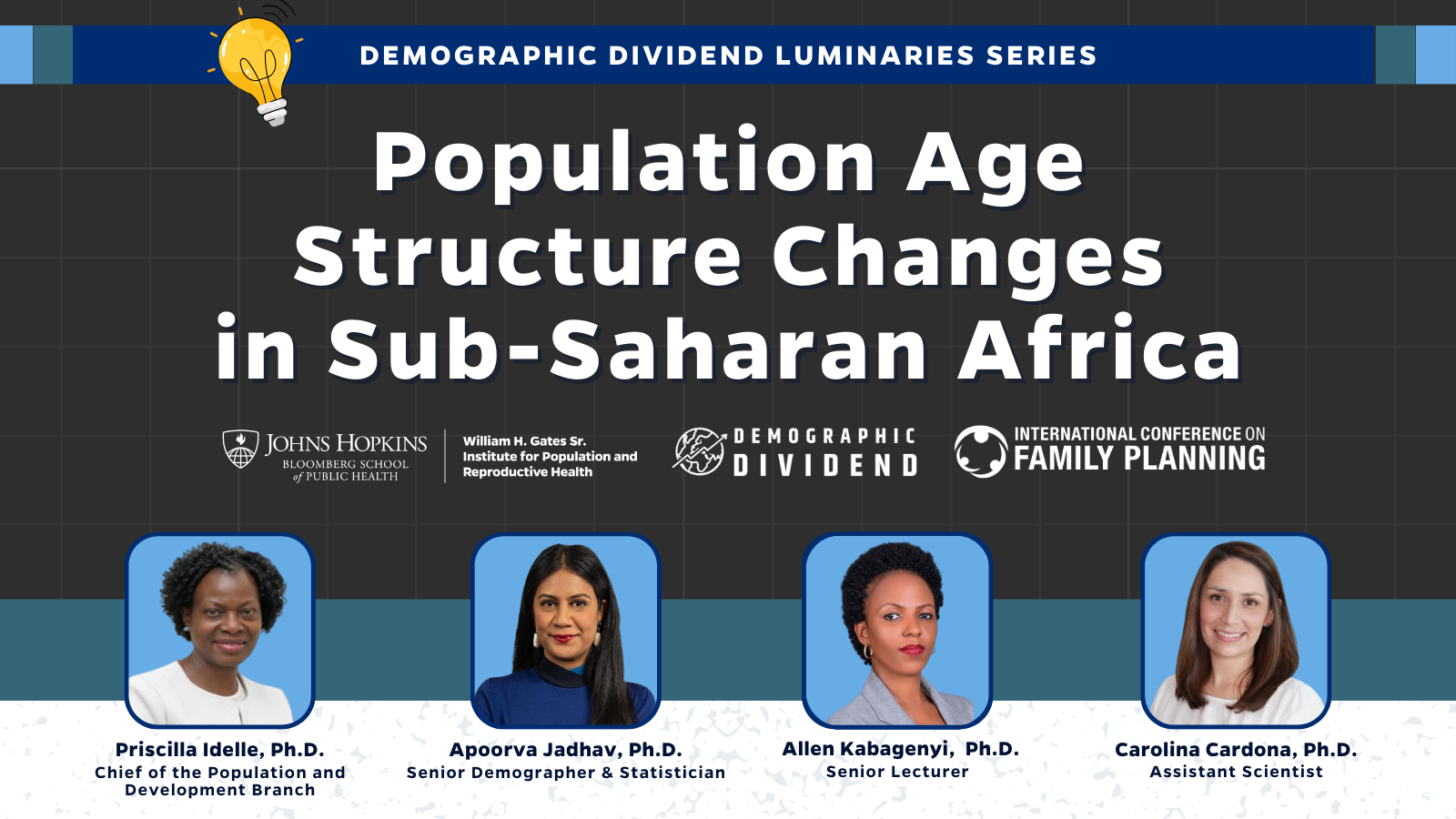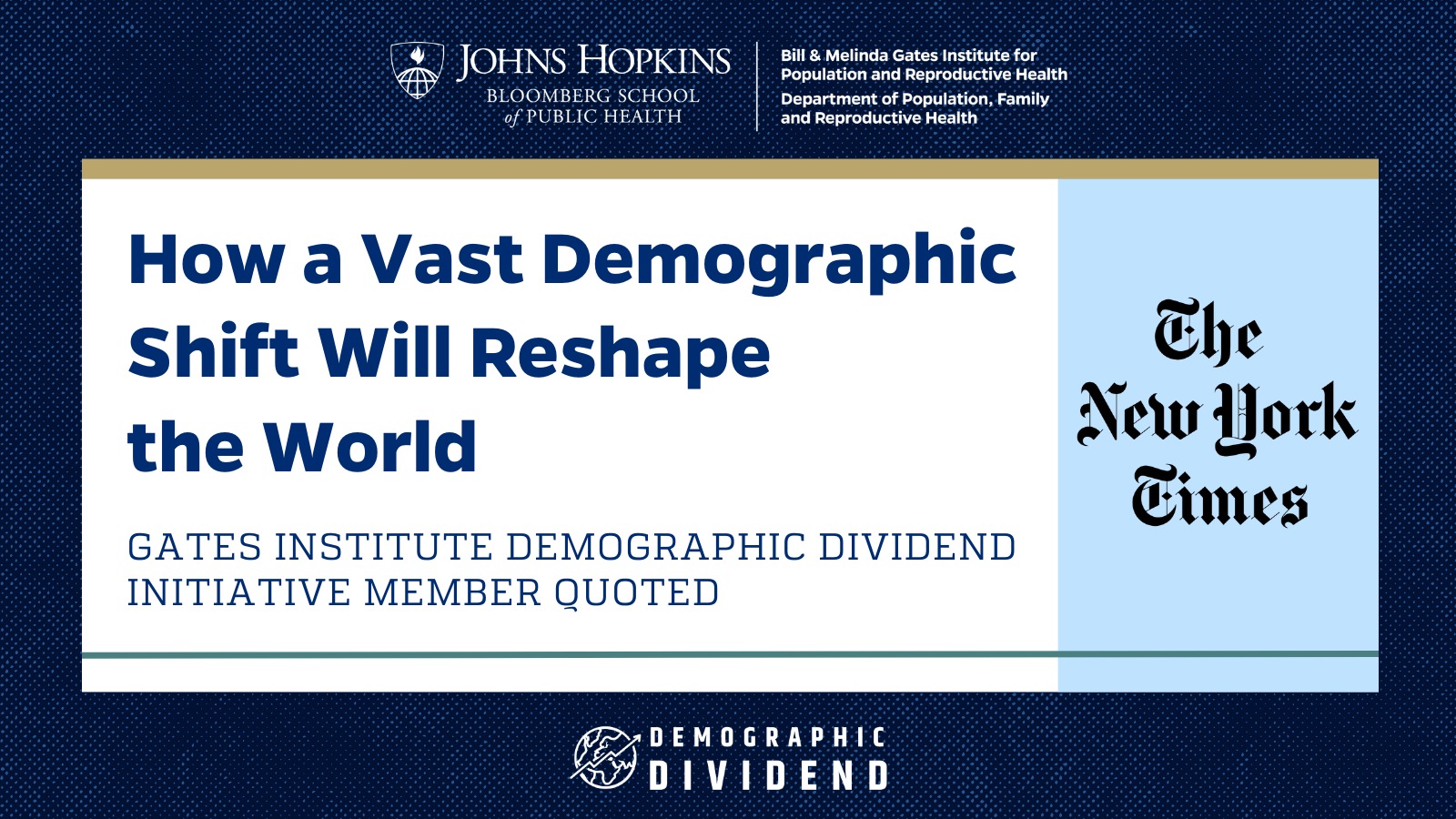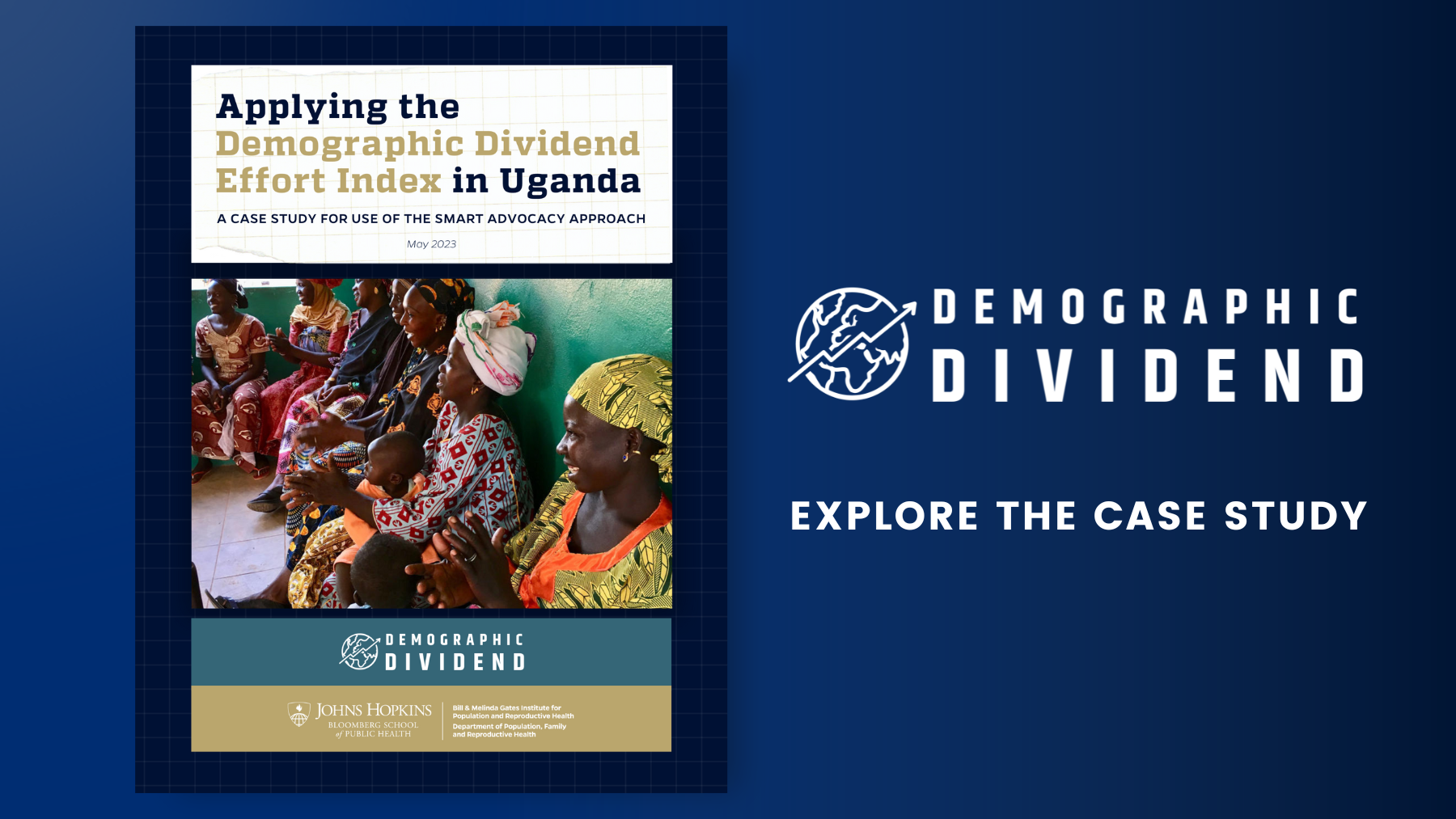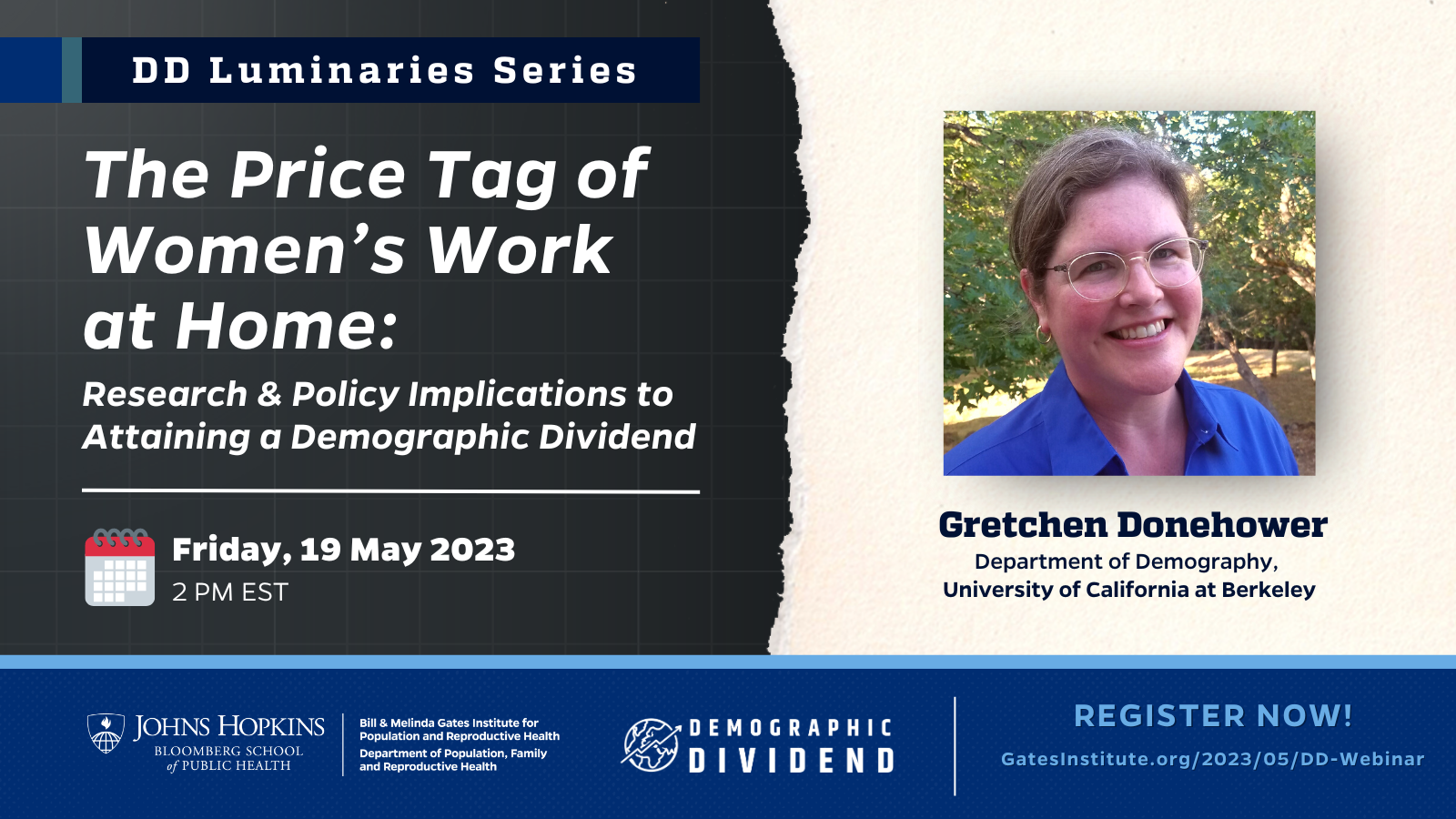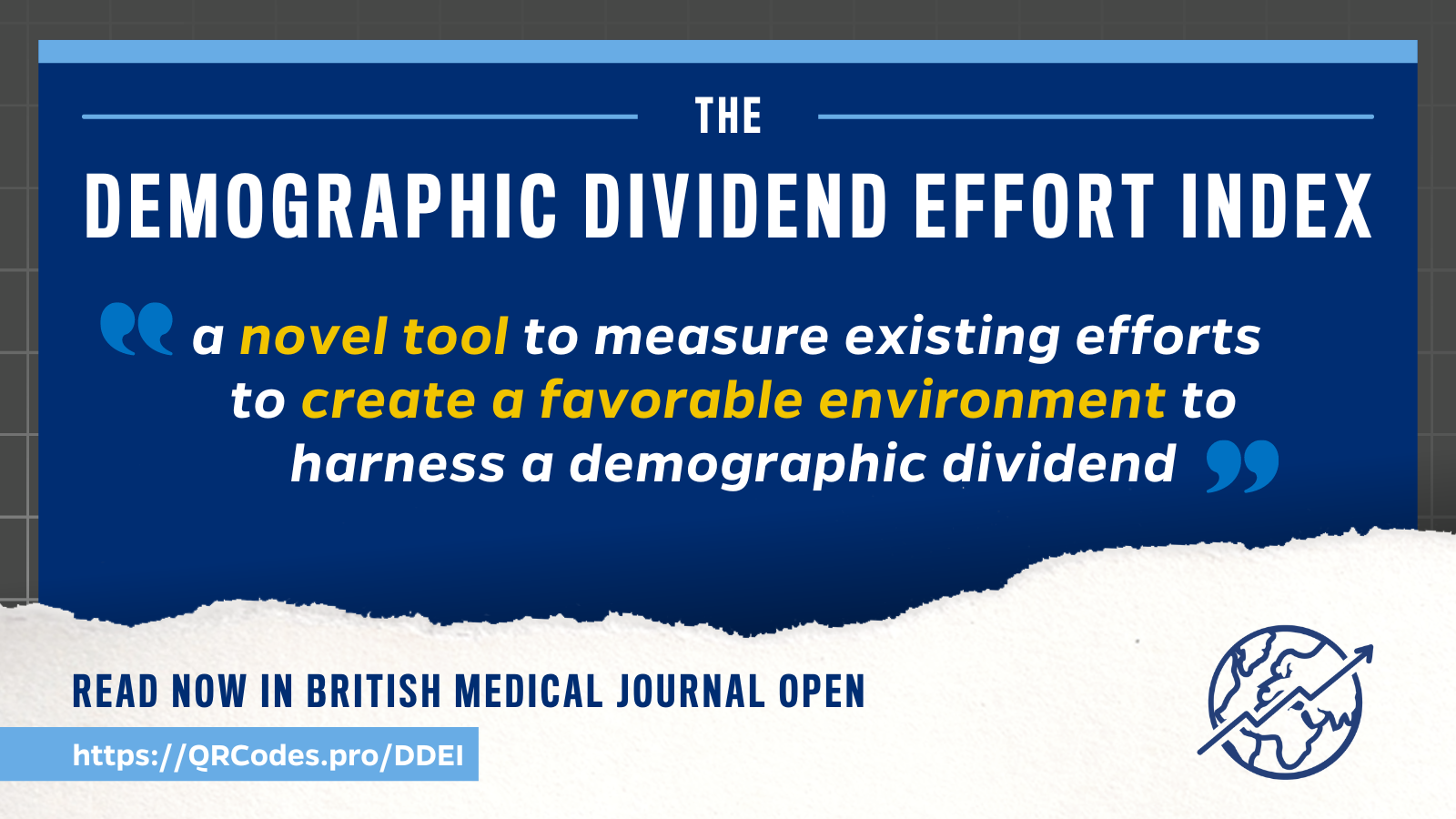Sub-Saharan Africa has the youngest population in the world, with a growing number of young people entering working age. As more people are working an generating income, this presents a ripe opportunity to harness the Demographic Dividend.
In an interview with the Gates Institute, Mr. Abebe Aemro Selassie, the head of the African Department of the International Monetary Fund (IMF), discussed the prospects of realizing the Demographic Dividend in Sub-Saharan Africa. The IMF is an international organization headquartered in Washington, D.C.; it consists of “189 countries working to foster global monetary cooperation, secure financial stability, facilitate international trade, promote high employment and sustainable economic growth, and reduce poverty around the world,” according to its website. The African Department of IMF covers 45 countries in Sub-Saharan Africa.
Q: What is the demographic dividend in your view? And how does the IMF view the demographic dividend in Sub-Saharan Africa, the prospects for it?
A: Countries in sub-Saharan Africa have by far the youngest population in the world. It varies from country to country, but by a.d large the region’s population is very relative to most other parts of the world. And going forward, this should have some positive economic benefits. In particular, the share of the working-age population, typically between 15 and 64 years of age, will increase significantly. In most other countries, this has been associated with an increase in investment demand and savings as more and more people are working and generating income. This, in a nutshell, is among the most important aspects of the demographic dividend.
Q: What would you consider would be the precursors of achieving that demographic dividend? What would be key in achieving that, exceptionally in Africa?
A: Clearly, one of the requirements to get the best out of this potentially very large positive shock, is making sure that you have a healthy and well-educated population. A great deal of investment in education will be required to bring the quality of the labor force up to globally competitive levels.
The other related aspect, of course, is the investment in health. One of the reasons why you have such high population growth rates, high fertility rates, in Sub-Saharan Africa is because infant mortality, child mortality remain high. More progress is needed in reducing these incidences. And also, once kids go beyond those ages, it is important to ensure that they have good quality health.
These are among the most important investments that countries need to make now.
Q: Would you consider family planning programs as a critical part of making sure that we have that bulge of young people who are qualified and able to contribute to the economy?
A: We’re not experts on family planning at the Fund. But my sense is that there is not one particular policy lever that is going to be sufficient to make sure that the impact of the demographic dividend is going to be as beneficial as it needs to be.
Q: So, are you saying that there is a need for concerted action on many different policy dimensions?
A: Indeed, yes. So very much. I think it is in the nature of the whole development process that many aspects of economic life need to improve. And there’s a role for macroeconomic policies of course, but there is also a role of investments in health, education, and all the other facets of economic and social life.
Q: So, the youthful population of the African region — there is a need for us to be thinking about how we can better employ them and better have them contribute to the local economy. We know that is a primary concern in many parts of Africa. What are some policy levers that people can use in order to help that situation, knowing that indeed the youngest population is on this continent?
A: Indeed, addressing the demand for a lot of jobs in coming years is very much what on most in policymakers’ minds in the region. At the most general level, what you want to do is sustain as high economic growth as feasible. An important ingredient for this is maintaining a healthy macroeconomic environment. While by no means is this a sufficient condition for lot of job creation, in its absence, as in many Latin American countries in the past relative to say Asia, we tend to get a lot of volatility in economic growth and limited job creation Thus ensuring that an effective central bank, Ministry of Finance, transparent budgetary processes, allocating limited public resources wisely, ensuring effective collection of taxes are all key ingredients.
Depending on country circumstances, there may also be a need for reforms to promote growth. In some countries, the challenge has to do more with the business environment — improving licensing processes, removing barriers to the entry of companies into activity. In other countries, it has to do with shortages of public goods and services. Things like infrastructure, be it things like ports, electricity, investment. Depending on the nature of the challenge addressing those will be important to foster job creation. Q: So when people talk about the demographic dividend, what comes to mind is the experience in East Asia, wherein some scholars say that maybe a fourth to about a third of the growth that happened in this region could be traced to the improvement in the dependency ratios that happened because of the fast fertility decline that ensued starting in the ’70s or so. Would you say that that kind of sequencing would be what would be helpful for Africa as well, in terms of capturing that demographic dividend for the continent?
A: In sub-Saharan Africa, so far, the decline in the fertility rate has been somewhat slower, on average, than observed in most Asian countries. This has given rise to a concern that the demographic dividend may not play out in the same way that it has played out in Asia. My sense is that it is still too early to say how it will play out in sub-Saharan Africa.
Q: Is there any lesson from that East Asian experience that maybe Africa could take a page from?
A: As a macroeconomist, I think that there is a tremendous amount that Africa can learn from the economic policies that were pursued in Asia that facilitated labor-intensive growth, helping create lots of jobs. I think first and foremost is the importance of keeping an even keel for the macroeconomy, avoiding macroeconomic imbalances typified by high fiscal or current account deficits. But that’s more of a defensive policy measure. On the more positive side, trying to find smart ways to do government interventions that address constraints on growth will be very important. I think there is a lot of scope in countries to identifying barriers to product-market space, for company entry, for fostering greater competition. Identifying those and facilitating more investment will be important. Much the same also in the labor markets’ bases. Making sure that you have a well-developed and well-skilled labor force that can contribute to helping raise productivity are all part of the equation.
Q: In terms of Africa’s uniqueness, what do you think is the characteristic of countries in Africa now that means that they are going to follow maybe a somewhat different story compared to the East Asian story?
A: In terms of the broad development challenge, there’s a host of differences. I mean, Africa has a very unique economic and political and social history. The impact of colonization was, of course, very different in the region relative to Asia. And then of course geography for some countries is also quite challenging. You have a lot more land-locked countries, which makes it a bit more difficult to be integrated into global economies as readily as those countries on the coast which have easier access to the sea. Another aspect that complicates and differentiates Africa is the fact that you have so many smaller countries relative to Asia.
Q: Two years ago, the World Bank and the IMF had a joint report, and it talked about how demography affects economic growth and reduction in poverty. And they classified countries according to several categories, but those categories were based on whether they were considered to be a pre-demographic transition, or early demographic transition, or late demographic transition countries. And you would see that most of the developed countries now are on that late transition side, but most of the countries in Africa were on the early transition or pre-transition side. Do you think that this is a useful lens by which we could think about development strategies? And how can we follow through with viewing that demographic lens in terms of what actions can be proposed or recommended for different countries?
A: It is always important to bear in mind the tremendous heterogeneity in sub-Saharan Africa. I think the early demographic transition label is perhaps appropriate for some countries in the region. But within Sub-Saharan Africa itself, there is quite a lot of variation in terms of what stage of the demographic transition countries are in. Countries like South Africa, Lesotho, and a few others are at a fairly advanced stage of the demographic transition. By no means are they grappling with aging societies at all, but the median population age is quite higher than in a place like Niger, where the median age is on the order of 15, 16. So within Sub-Saharan Africa, we do see a non-trivial variation in what stage of the demographic transition countries are in. Q: For that transition to happen requires certain policies for countries that would be classified as early transition or pre-transition. What are some of those policy actions that policymakers need to fight for?
A: I think the onus in terms of making sure that there is adequate investment in health, in education, is even more important in those countries. On health, for example, one reason why those countries remain in the pre-transition stage or very early transition stage is that they have very high fertility rates. And one factor that has typically been written about contributing to this is that such countries tend to have very high infant mortality rates, very high child mortality. So investment in health to address the root causes of high infant mortality and high child mortality I think is really, really paramount. We’ve seen a very rapid decline in infant and child mortality rates and maternal mortality rates, but not enough. We still have very high numbers relative to where the rest of the world is. So trying to address those is one [action] that I think could contribute to facilitating a quicker demographic transition.
Q: When people think about the demographic dividend, some people view it as something that is too far off — that you need to wait maybe 30 years or so in order to reap those benefits. What would be something you would say to those folks who say this doesn’t bear fruit in this work line you belong to?
A: For the global economy, for international policy makers, the international business community, what is important to bear in mind is one point: by 2030 (only 10-11 years from now) sub-Saharan Africa will account for half of all the annual increase in the half of the increase in the global workforce population. This means two things for me. One is that for any companies of scale that have activities that require significant labor input, I think they need to have a strategy to relocate and make use of labor force that is going to be ample in sub-Saharan Africa. Second, this is all the more important because at the same time in much the rest of the world, the working-age population will be remaining flat or declining. So this juxtaposition of rapidly increasing working-age population in Sub-Saharan Africa with one that is plateauing or declining elsewhere in the world is also something that is going to be of global consequence and has to be internalized by the international community.
Q: We are still seeing quite high fertility rates in Africa. It’s slowing down, but not as fast as in other areas or as fast as have people have expected. Is there a reason to worry about the demographic timeline?
A: There’s always a reason to worry about the uncertainness around future outcomes. If economic growth cannot be sustained at a pace that accommodates the people that are coming into the labor force you will, of course, have pressures and social tensions. By the same token, I think the changes that we’ve seen in Sub-Saharan Africa over the last 20 to 25 years have been phenomenal. The opportunity set for a whole generation has improved tremendously over the last 20 to 25 years. Conditions in the early 1990s in the region were fairly difficult and wouldn’t have suggested that the period of strong growth and improvements in human development outcomes that we’ve seen since would follow. We’ve seen tremendous improvements in the region: in terms of the evolution of institutions, improvement in the quality of governance, improvement in the political systems, improvement in policy making, and this gives me a lot of hope that going forward also that demographic challenge that we see can be overcome and will actually be more beneficial to the region’s future.
Q: In your conversations with country governments, does demography come up? And how much concern do they express about their ability to provide for their very youthful populations?
A: It is a concern that comes up in policymakers’ minds. Typically it’s framed in need to invest more in public infrastructure to facilitate higher economic growth, discussions about the need for additional spending and investment in things like health and education. I think there is a lot of recognition that there is a need to increase the number of classrooms, the quality of education in schools. Better public infrastructure to facilitate more private investment. A good example, of course, is discussions we have about increasing investment in energy. Without electricity, you cannot have the kind of structural transformation that is needed to help improve productivity, to facilitate newer forms of activity. So in our discussion with country authorities, that is typically how the effect of the ongoing demographic developments manifests itself.
Q: Some people think that reproductive health is more the purview of the Ministry of Health, but not the Ministry of Finance or the economic body. Do you think that’s the right way to approach these issues?
A: I have to say, not being experts on reproductive health issues, this is not an area where we, as IMF economists, have ventured a great deal into.
Q: That’s fair enough. In your conversations with policymakers, what are the tactics by which we can convince them that this is the right way to go? What are the strategies for people and advocates to reach out to their policymakers and capture their attention?
A: I think some humility is needed by all of us. You know, I think the pressures that countries face — the social pressures, the political pressures that come with the very large bulge you have in young people entering job markets — is high. Officials are typically very keenly aware of those pressures. I think our responsibility as external actors is to help emphasize those areas that we’ve seen in other countries bear a lot of fruit and allow countries’ authorities to customize those policies to the particular circumstances of their countries.
Q: What are the areas of optimism for you in Africa in terms of the way that policymakers are approaching this issue of the connection between demography and population development?
A: As I said earlier, from the work we’ve done what we’ve seen is that in almost every case where countries have gone through a demographic transition, per capita income at the end of the transition has been higher than at the beginning of the transition. In some cases, of course, phenomenally higher—as was the case in many Asian countries, for example. What we want to see is countries in Sub-Saharan Africa emulate what Asia did and come out at the end of the demographic transition with much higher levels of per capita income.
One of the areas which I think promises a lot of hope for the region to do so is the ongoing technological revolution. Just to give a small example, one that everyone is now familiar with, is in the Fintech space. The penetration of the traditional financial sector institutions in Sub-Saharan Africa has been limited to date, and I’m not sure that Sub-Saharan Africa, in terms of the financial sector, will develop in the same way that now advanced countries have. I think there is a lot of scope for skipping that whole intermediation through branch networks of banks and the like and moving to more modern forms of financial services that we’re now seeing the region being in the vanguard of innovation on. So technology does, I think, offer Sub-Saharan African countries some scope to facilitate high productivity growth.
Q: When you go into a country, and you’re talking about the demographic dividend, who do you feel it is important to have at the table? Who are those key players and policymakers who you feel it is important to come together?
A: We often want to hear are views from various interlocutors. Of course, policy makers–that’s imperative. But we also want to understand what the constraints to higher growth are from the business sector, from civil society organizations, from parliamentarians. So we try and meet as many counterparts as we can to try and understand what the constraints are and modulate our advice accordingly.
Q: If you would allow me to just go back to the question about the health sector and its relationship to the financial sector, which I think the IMF is most focused on –
A: I’m not sure that I know a great deal about the health sector per se.
Q: But in terms of coordination with other groups. For example, the World Bank, a sister institution, is the one may be mostly working on that side, on the social sector. Are there mechanisms in place for coordinating the financial sector work that the IMF is doing with what the World Bank does on the health problem? Is there that level of coordination that happens in-country?
A: We collaborate very closely with colleagues at the World Bank. The approximate demarcation of responsibilities is that we tend to work on the more macro policy areas—levers like fiscal policy, monetary policy, exchange rate, and tax policy issues. The Bank has a lot of expertise in health, education, infrastructure, and business environment issues.
To offer a concrete example, we often work with governments to create fiscal space to enhance more investment in health, education, infrastructure, etc. Bank colleagues will support the government in project selection and providing financing, of course.
Q: If you were approached by a policymaker who wanted to work with you on fiscal matters for a particular country, and who was also worried about the restlessness of that country’s youthful population because there weren’t enough resources for health, education and the like — is that something that you would give them advice on? Or maybe you would restrict yourself to the advice on the fiscal space? Because I believe that maybe there could be coordination on more active advice that could be sought. And I know that the governments listen to the IMF, World Bank, and many other institutions in order to understand what they could possibly do for their countries.
A: You know, what we try and do is to try and help governments strike a reasonable balance, between much-needed investments they need to make and avoiding an unsustainable build-up in public debt. Striking this balance is often very difficult, of course. As you said, there often are really very strong pressures to spend resources in the near term. So the question is, how much of this can you accommodate? How do you find a reasonable way of generating financing for this spending that is also sustainable? So we try and come up with ideas on how to facilitate that. But we also are, of course, always advising and highlighting the risks of spending aggressively now for the medium term. Really, it is up to the authorities where to strike this balance. What kind of risk appetite that they want to take? And we try to do our best to work with countries in finding and agreeing in the context of programs, of course, a level of spending that we think is reasonable.
Q: So there is a tremendous promise for a demographic dividend in Sub-Saharan Africa. And with your help, many groups are looking towards enacting policies and making the fiscal space available for further investments in education and health for their countryfolk. Are there some early successes that we could maybe look at in terms of countries that are moving along the right path and could conceivably harness the demographic dividend for their country?
A: You know, it’s a difficult question to answer, simply because of the tremendous heterogeneity of sub-Saharan Africa. And, you know, what I can tell you is that we have seen tremendous improvements in growth outcomes in the lion’s share of countries in the region. There are some countries that have sustained 20 to 30 years of uninterrupted growth, which is a huge feat. But in other dimensions, there are countries where the period of sustained growth has been shorter, but the improvement in development outcomes that we are looking at — things like improvement in life expectancy, reduction in maternal mortality rates, infant mortality rates — have been much quicker. Ultimately, it is a little bit in the eye of the beholder as to which country you would want to consider a success. Then there are other countries where the success has been less economic but rather progress in the political domain or improving the quality of institutions.
For me, development is a process that happens along many axes. Some of it is going to be in the political domain, some of it is in the social domain. The economic transformation itself is of course important. The improvement in the standard of living is important. Countries tend to be are at various stages in these grand transformation process.
Of course, we should also not neglect that in some countries, conflicts are still a big problem. South Sudan, for example, at the moment, or the Central Africa Republic, which is just emerging from a conflict but where a lot of difficulties remain.
What I would say is that overall the progress has been very encouraging for the lion’s share of the countries in Sub-Saharan Africa. And if this can be sustained going forward also, I think the outcomes will be very good.
Q: Will the faster fertility decline help sustain that economic growth?
A: Among many other things, yes.
Q: You mentioned the sources of optimism you have for the region given your experience. Could you please paint a picture of 2030 — what would maybe be the IMF’s goal for the region? What would it look like? What would be sort of the things that have improved such that we would see that sustainable economic growth path for the region?
A: My wish, hope, expectation, dream is of course for those countries currently in conflict or impacted by humanitarian crises to leave these behind them. And for them to emulate the path of the many other countries in the region that have been enjoying sustained economic growth and improvements in living standards. Increasingly also, the quality of economic growth in the region needs improving.
So my hope would be that by 2030 economies are growing even more rapidly than we’ve seen in the recent past. And if that can be sustained over a longer period of time, with the right interventions, it should engender economic transformations — countries moving towards higher productivity activities, integrating more into global supply chains, which will have a virtuous effect of raising living standards and creating the millions of jobs that the region needs to generate.
